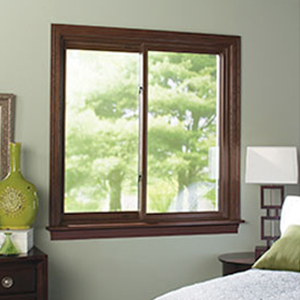Condensation is a sure sign that your windows have to be replaced.
Windows are an essential barrier in between the rough, variable weather conditions outside and our calm, consistent residence temperature levels. Home replacement windows tend to have a fifteen to twenty-year life expectancy, so fortunately we don't need to consider replacing them frequently. However knowing when it's time to replace them can be tricky. You might be tempted to try and hold out for another season if you recognize the warning signs. However changing your windows currently can aid you prolong the life of your whole residence as well as keep you as well as your family cozy all wintertime long. Here are a couple of signs that your home windows are not prepared for the harsh wintertime this year.
Drafty Home
As home windows age, they start reducing, breaking, and also not closing effectively, allowing air from within your home to drain. As a result of this, your HEATING AND COOLING system battles to keep your residence at a constant temperature level and also sends your energy costs skyrocketing. If your house is visibly much more breezy or your electric expenses appear to be rising this succumb to no noticeable reason, you may wish to have your home windows had a look at.
Hard to Lock
We enjoy having our windows open when the climate behaves, but they shouldn't be open all the moment. Throughout the winter and when we're not home, your windows must be shut in area and locked. Windows with malfunctioning locks is a major safety threat that need to be remedied as soon as possible to keep your household risk-free. Usually the lock can be fixed reasonably, but if the window is having trouble staying open or shut or is leaking air, it may be best to simply set up a new one.
Condensation Forming
The greatest indication that you require new windows is when condensation starts to form on the inside of your home window when it is closed and also secured. This is a measure of a most likely permanent problem as well as must be resolved asap to avoid the prospective growth of mold in the structure, which could infect other areas of your residence as well as trigger major damage when left unattended.
Have you nearly had it with your old, breezy windows?
Is this the year you've decided to ultimately replace your windows? Replacing your home windows with brand-new ones comes with lots of benefits, consisting of a power effectiveness increase, better air flow, as well as better top quality of light in your home. The National Window Score Council certifies and also identifies home windows (in addition to doors and skylights) on their efficiency and power efficiency. When you're buying new home windows you'll see these scores on the NFRC tag. In this week's blog, we'll speak about ways to read this tag to make certain you're making an informed choice on your brand-new windows.
Warmth Gain and Loss
The initial three residential or commercial properties on the tag relate to just how the window does when it come to heat gain as well as loss. Windows gain and also lose heat in three means:
Direct conduction via the glass.
Radiation of heat from the sun right into your house, and outdoors from things in the house.
Air leakage with and also around the home window.
U-factor
This is "The rate at which a window, door, or skylight carries out non-solar warmth circulation." The takeaway here is "The lower the U-factor, the a lot more energy-efficient the home window, door, or skylight."

Solar Warm Gain Coefficient
The SHGC tells us how much radiation is admitted through the window and also launched as warmth in the residence. The reduced the number, the much less warm is transferred. Nevertheless, this doesn't necessarily mean you want a reduced SHGC. As an example, due to the fact that a greater SGHC implies the window permits more warmth in, you could enable much more solar heat inside in the winter, which can minimize your heating requirements. In this instance, the environment you reside in will play a significant factor in choosing an SHGC ranking.
Air Leak
This quantifies how much air the home window lets in about a certain pressure distinction across it. The lower the score, the less air leak.
Sunlight Passage
The following two rankings measure what does it cost? light a home window lets right into your home.
Noticeable Transmittance (VT).
This number in between 0 as well as 1 measures what portion of the spectrum of noticeable light the home window lets through. The higher the portion, the a lot more light the window will enable. If you intend to employ daylighting in www.bureshhomesolutions.com your house, you'll want a greater fraction. If you wish to reduce indoor glare, you might desire a lower portion.
Light-to-Solar Gain.
This number is the ratio between the SHGC and also the VT. "The higher the number, the extra light transmitted without including too much amounts of warmth.".